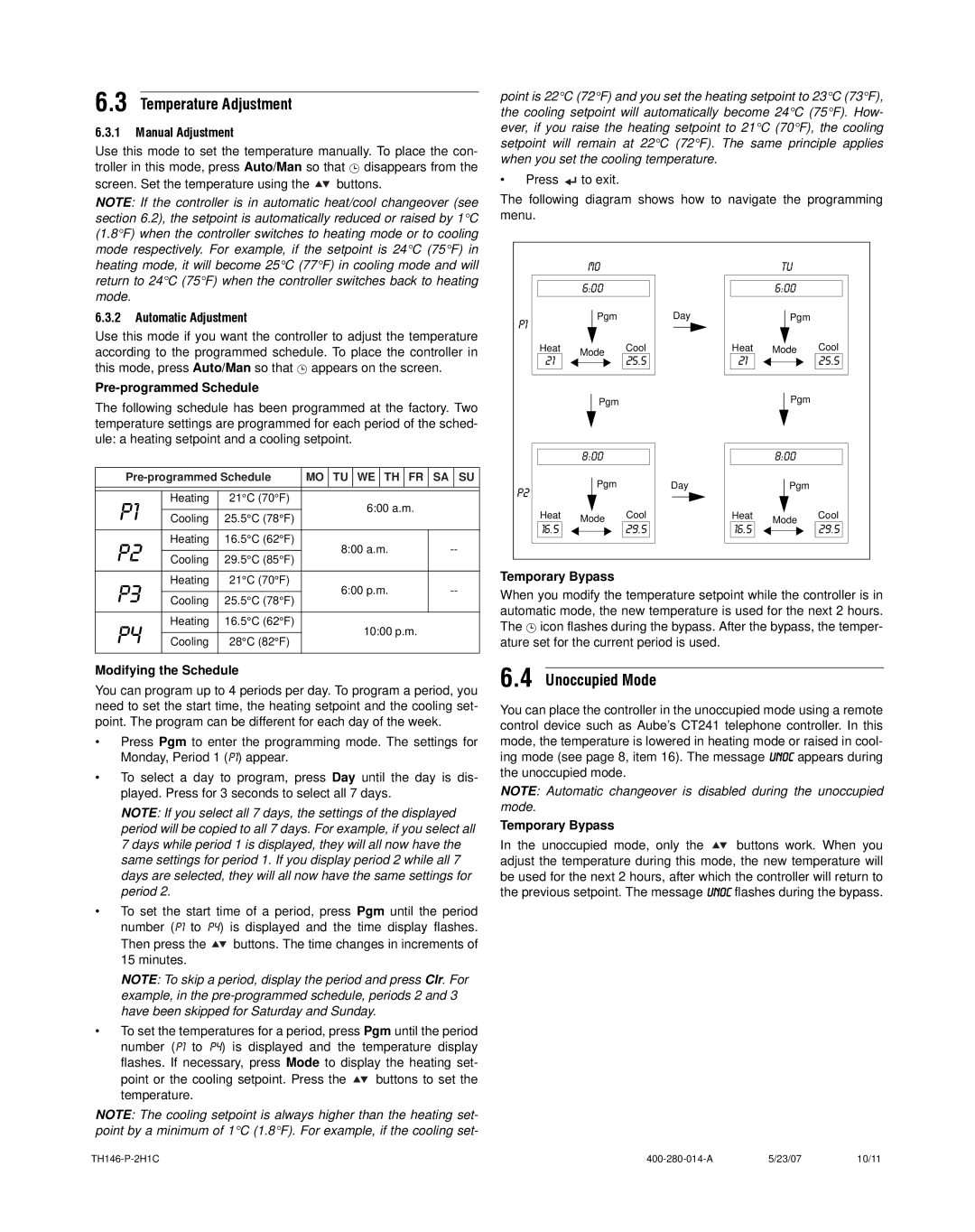TH146-P-2H1C specifications
Aube Technologies, a renowned leader in temperature control and energy management solutions, has developed the TH146-P-2H1C model, a programmable thermostat designed to enhance user comfort and streamline energy consumption. This advanced thermostat is particularly acclaimed for its versatility and intelligent features, making it an ideal choice for both residential and commercial applications.One of the main features of the TH146-P-2H1C is its ability to control heating systems efficiently. It supports various heating types, including electric baseboards, fan-forced heaters, and conventional heating systems, making it a flexible option for different environments. The thermostat offers simple programming options, allowing users to set specific temperatures for different times of the day and days of the week. This level of customization helps to optimize energy usage, leading to potential cost savings on heating bills.
In terms of technology, the TH146-P-2H1C incorporates an intuitive interface with a large, easy-to-read display. The user-friendly design facilitates straightforward programming and real-time temperature monitoring. It utilizes advanced temperature sensors to ensure accurate readings, adapting to the home or building’s unique heating needs. The thermostat also features a "hold" function, which allows users to maintain a specific temperature for an extended period, providing increased flexibility during unexpected schedule changes.
Another key characteristic of the TH146-P-2H1C is its energy-saving capabilities. It includes a built-in energy monitoring feature, enabling users to track their energy consumption over time. This transparency empowers homeowners and facility managers to make informed decisions about their heating practices, further promoting energy efficiency. The device also complies with modern energy standards, making it an environmentally friendly choice.
Security is another aspect that Aube Technologies emphasizes with this model. The TH146-P-2H1C includes a locking feature that prevents tampering, ensuring consistent settings and preventing unauthorized adjustments, which is particularly important in commercial settings.
Overall, the Aube Technologies TH146-P-2H1C thermostat represents a blend of functionality, energy efficiency, and user-friendly design. With its robust features and commitment to precise temperature control, it stands out as a compelling choice for those looking to enhance their heating systems while contributing to energy conservation efforts. Whether for personal residences or commercial spaces, the TH146-P-2H1C is poised to deliver comfort and reliability.

